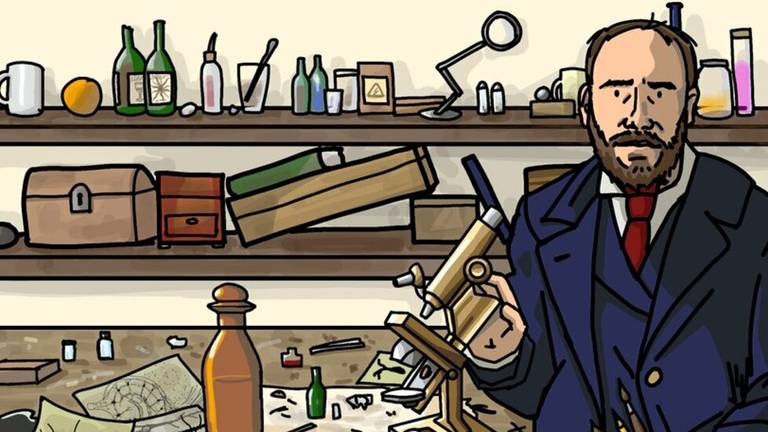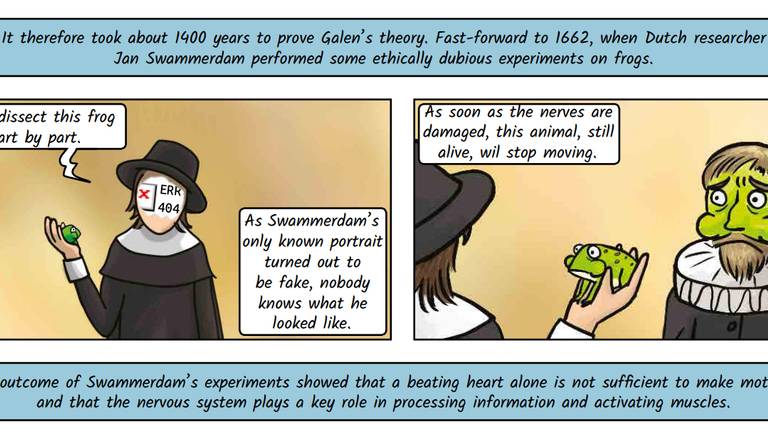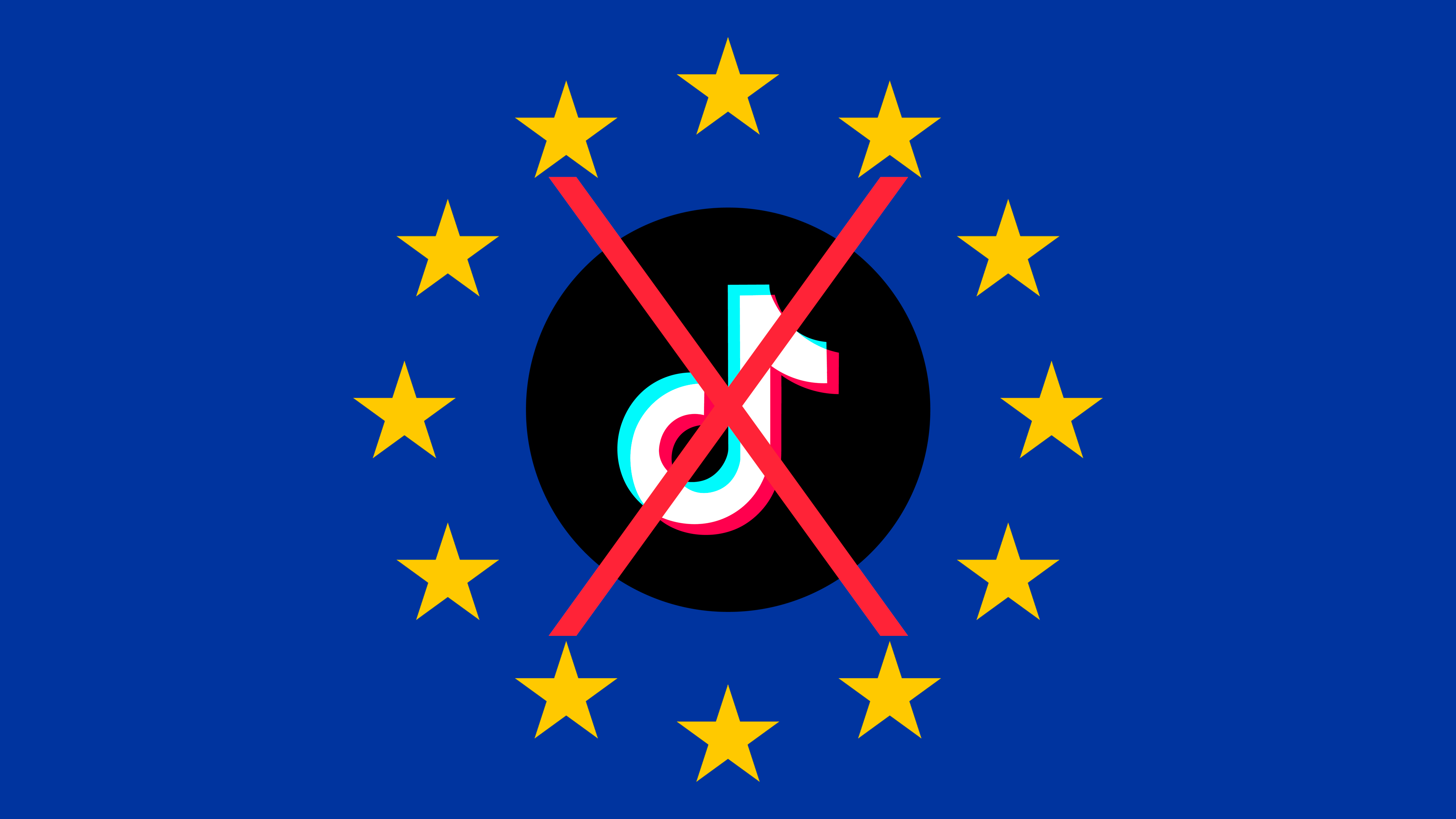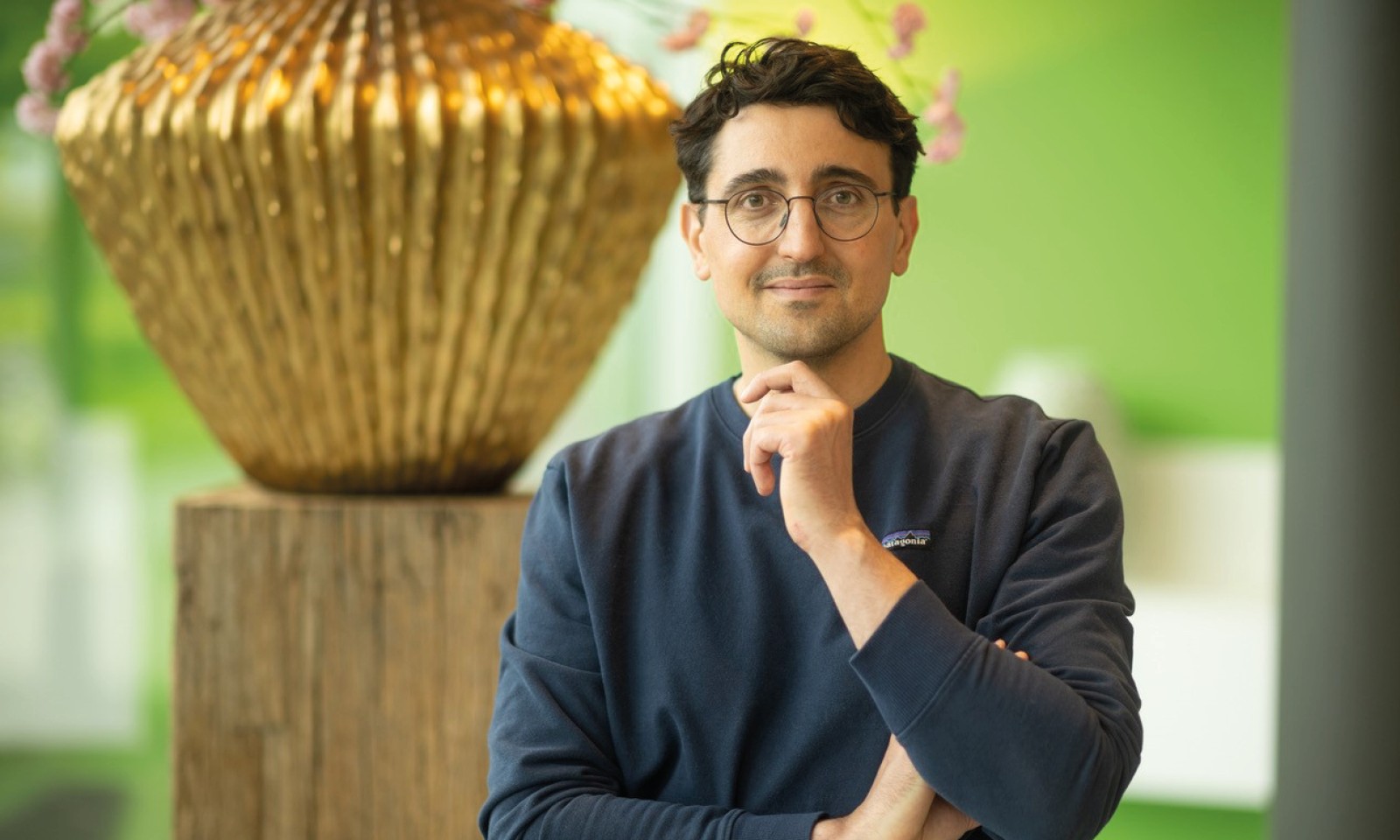“Everything that can go wrong has gone wrong,” says Elles Raaijmakers of Eindhoven University of Technology about her research. Her thesis, On the Brain Under Power, was a difficult delivery. To give her frustration and inspiration a place to be, she began sketching out her thoughts. It has become a comic book. A treatise on complex neuroscience in humorous form. Others also seem to like him a lot.
It is a fifty page comic strip, in addition to her “normal” dissertation. The story revolves around Frankenstein and Roman administering electric shocks with electric beams, eventually ending up with her own treatise on the effect of electric fields on brain cells. “How much was this work?” “You can no longer talk for hours here.”
The idea for her comic strip originated on a train. During research, the PhD student spends four hours a day on public transport, commuting between the universities of Eindhoven and Amsterdam. She’s been painting for a long time and loves it, so it seems like a logical move to draw her frustrations and inspirations. Visually and with a little humor. So, between all the brain research, her brain is also getting a little rest.
Raaijmakers’ research has not run smoothly. “We thought a handful of measurements was enough, but it took longer and longer. Four years became five, five years became six and six became seven. In fact, everything that could go wrong was wrong,” she says with a wry smile. With a sarcastic smile.

“It has become my way of dealing with setbacks.”
She finds it very frustrating. As a result, drawing for a doctoral candidate is becoming increasingly important. “It became my way of dealing with setbacks,” she explains. For example, it shows a drawing by Santiago Ramón y Cajal, a Spanish biologist who studied the tissues of living things. This print alone took a week to complete.
He’s standing by a cluttered desk, with a few bottles of wine on the shelf behind him. “He was weird, but he grew up to be the father of neuroscience,” Raaijmakers says admiringly. It wasn’t like that for him. He also made it visible.

“People who don’t usually open my search can now understand why I do.”
But her comics have more advantages. People who don’t read more than once a grandiose treatise become curious because of the illustrations. Makes things a little easier. In her story, Raaijmakers takes the reader on a journey through the history of neuroscience. Along with Frankenstein, for example, or the Nobel Prize winner Hodgkin. Or the Romans, who were electrocuted with electric beams, only to end up with her own hypothesis. “People who don’t usually open my search can now understand why I do.”
She has now defended her dissertation and has shown that her research initiates all kinds of growth and learning processes in neurons in the memory region. And you can make a comic book about it.


“Total coffee specialist. Hardcore reader. Incurable music scholar. Web guru. Freelance troublemaker. Problem solver. Travel trailblazer.”








More Stories
Prevention is better than cure
SpaceX has launched two European Galileo navigation satellites into space
Sudden thawing of permafrost releases much more carbon dioxide than expected